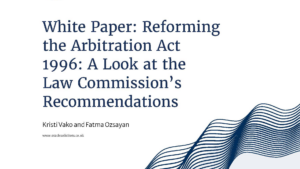What are the rules of flying and owning drones in the UK?
Have you got a question?
Drones have gone from niche geek gadget to High Street mainstay over the last couple of years, but as they’ve grown more popular, we’ve also seen year-on-year increases in disruptive and potentially dangerous incidents involving them. People caught flying drones at Gatwick airport could face up to five years in prison. To ensure the safety of both drone users and the general public, UK drone laws keep having to evolve, but the regular changes make it difficult to know what you can and can’t do with the flying bots.
It isn’t the first time drones have been reported at Gatwick airport. In July, a drone passing over the right wing of an Airbus A319 “put 130 lives at risk”, according to the pilot, while the British Airline Pilots Association recorded 117 near misses between aircraft and drones throughout the UK between January and November this year.
The government ran a public consultation on a batch of new proposals from July 6 2018 to September 17 2018, which attracted 5061 responses. It revealed the outcome of consultation on January 7 2019, and there are some significant UK drone law updates to be aware of if you wish to avoid fines and potential prison sentences.
Knowingly or not, the operators of these drones were in violation of rule number one of the Civil Aviation Authority’s Drone Code: “Don’t fly near airports or airfields.”
It will be illegal to fly a drone within 5km of an airport, up from 1km.
Furthermore, the government says: “The new restriction zone will include rectangular extensions from the end of runways measuring 5km long by 1km wide to better protect take-off and landing paths.”
Aviation law is a specialist practice area for Oracle Solicitors. We harness the skills of our dedicated team to advise and assist clients with the full spectrum of airline-related legal issues, ranging from passenger rights claims over delayed and cancelled flights to international commercial litigation over aircraft leases.
Do you need a licence to fly a drone?
Anyone flying a consumer drone for recreational purposes in the UK does not actually need a licence, as long as the drone is under 20kg in weight and the operator obeys the law.
The UK government has posted advice on its website for drone owners and operators, warning that quadcopters and other flying machines are subject to the law through the Air Navigation Order.
“If you are using a drone for personnel use then you are governed by the Civilian Aviation Authority (CAA) Air Navigation Order 2016, specifically Article 241 (endangering the safety of any person or property), Article 94 (small unmanned aircraft) and Article 95 (small unmanned surveillance aircraft),” the guidance states.
Only people using a drone commercially require a licence to fly them, which can be obtained by registering with the CAA through the organisation’s website.
The CAA came up with a simple summary of the rules to follow when flying drones:
- Don’t fly near airports or airfields.
- Remember to stay below 400ft (120m).
- Observe your drone at all times – stay 150ft (50m) away from people and property.
- Never fly near aircraft.
- Enjoy responsibly.
A drone user could be slapped with an FPN for committing any of the following offences:
- Not producing registration documentation, and/or proof of registration for drones between 250g and up to and including 20kg in mass, at the request of a police constable
- Not producing evidence of any other relevant permissions required by legislation, for example if you are a commercial drone operator or have an exemption from the CAA from an ANO 2016 article
- Not complying with a police officer when instructed to land a drone
- Flying a drone without a valid acknowledgement of competency, or failure to provide evidence of meeting this competency requirement when requested
What would happen if a drone collided with a plane?
The aviation industry is still working to fully understand the implications of a drone hitting an aircraft.
“It doesn’t take much imagination to understand the likely consequences of 3kg of metal and plastic, including the lithium-polymer battery, hitting a helicopter windshield or, perhaps worse, the tail rotor at 100mph,” the advice from the UK government states.
“Likewise for a fixed wing aircraft but at greater speeds, hitting the canopy or disappearing into an engine intake.”
For the drone operator, the penalties are severe. Anyone caught flying a drone above 400ft or within an airport’s boundary faces an unlimited fine or up to five years in prison.
Our solicitors can help you with:
- Criminal defence services if you are accused of misusing a drone, and
- Litigation services (claimant or defendant) relating to the rights of passengers whose flights were delayed, cancelled or diverted as a result of the drone chaos at Gatwick before Christmas.
Do not hesitate to get in contact and find out what we can do for you!
Alessio, with the Marketing team, strives to help colleagues excel with client care, while also keeping the firm ‘on the pulse’ regarding the most critical...
-
Aviation House, 125 Kingsway
London WC2B NH
United Kingdom
- (+44) 020-3051-5060
Book a call back
Share this article
Got a question?
Please complete this form to send an enquiry. Your message will be sent to one member of our team.
Related posts

Monitoring and protecting your Intellectual Property: The Why’s and How’s
Intellectual Property (IP) rights are business assets, and often the most valuable assets a business has. These protectable rights encompass patents, trademarks, copyrights,

Oracle Solicitors advises a German assets acquisition by a Chinese purchaser
Our client is a company listed in Shanghai Stock Exchange, one of the biggest intelligent power distribution solution providers as well as manufacturer of smart meters, transformers, box-type substations, E-Car charger and photovoltaic inverters.

Reforming the Arbitration Act 1996: A Look at the Law Commission’s Recommendations
Have you got a question? Enquire Now Kristi Vako and Fatma Ozsayan have looked at the new recommendations published by the Law Commission.

Judgment in Lipton v BA Cityflyer Ltd (10 July 2024)
Today the UK Supreme Court handed down its decision in Lipton v BA Cityflyer, long awaited after almost 5 years of litigation, unanimously



